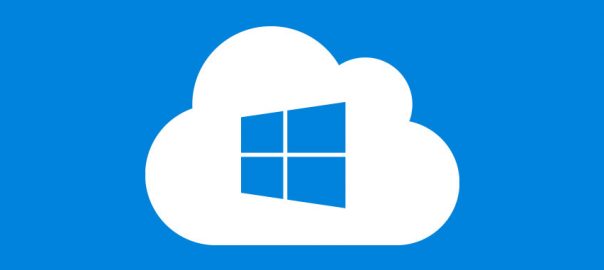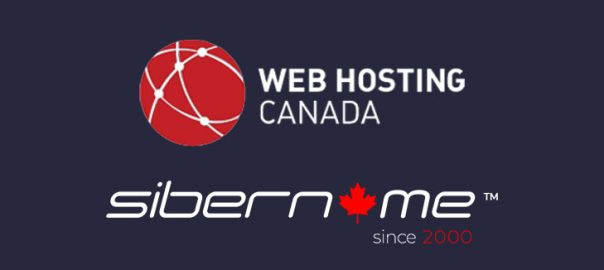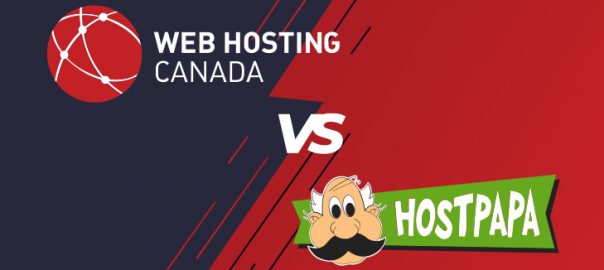
Archives


Web Hosting Canada Acquires Sibername to Further Propel Its Domains Offering

A HostPapa Alternative: How does WHC compare?
A HostPapa Alternative:
How does WHC compare?
Canadian Web Hosting Comparison and Review
Web Hosting Canada and HostPapa both provide Canadian businesses with eco-friendly web hosting and domain registration services, so it’s not surprising that the two are often compared. However, many of the “comparisons” that exist on the web either don’t delve into enough (or any!) detail or simply rank hosts based on which one pays out the highest referral fees. We’ve decided to prepare a complete HostPapa vs Web Hosting Canada comparison and review in order to help answer a simple question: which provider is best suited to host your website?
Quick Summary
Don’t have time to read through all these geeky details? We understand!
Here’s a visual summary, including a 5-star rating, that shows the strength of each company in every category:
| Web Hosting Canada | HostPapa | |
 Hosting Essentials Hosting Essentials |
||
|---|---|---|
 Pricing Pricing |
||
 Email & Communication Email & Communication |
||
 Security & Backups Security & Backups |
||
 Performance Performance |
||
 Marketing & SEO Marketing & SEO |
||
 Support & Service Support & Service |
||
 Potential For Growth Potential For Growth |
Our Method
To avoid bias, we focused all comparisons on measurable metrics rather than personal opinion. We either collected and measured data that is available to the general public, or simply referred to the information already listed on the provider’s website.
We compared our most popular product, the Web Hosting Pro plan, with a similarly priced service offered by HostPapa, their Business Plan
The result is meant to be an informative comparison, broken down by topic, and intended to help you find the best web host for your needs.
The data collected is actual as of December, 2023, and may have changed since.

Company Basics
| Web Hosting Canada | HostPapa | |
| Year Founded | 2003 | 2006 |
|---|---|---|
| Company Headquarters | Canada (Montreal) | Canada (Oakville) |
| Website Address | WHC.ca | HostPapa.ca |

Hosting Essentials
Hosting essentials include important features such as how many websites you can publish, how big each website can be and how many people can visit them each month. Understanding these hosting essentials is important before any hosting purchase, because if you exceed these limitations you may find your service disabled or you may be asked to upgrade to a more expensive plan.
| Hosting Essentials | Web Hosting Canada Pro Plan |
HostPapa Business Plan |
|---|---|---|
| Disk Space | Unlimited | Unlimited |
| Bandwidth | Unlimited | Unlimited |
| Number of Sites | Unlimited | Unlimited |
| Free Domain Registration or Transfer | Included | Included |
Both plans have the same core hosting essentials.

Pricing
Pricing features include the total price of the first term, total renewal price, and whether or not the company charges in Canadian dollars. Paying for recurring services like web hosting in Canadian currency can save Canadian businesses quite a bit in the long run, and in most cases companies that don’t charge in Canadian dollars are not Canadian-based.
The renewal price is another critical factor many people who are new to web hosting fail to consider. It is common practice for web hosts to offer a discounted price for the first payment term, with a significantly higher renewal price.
| Pricing | Web Hosting Canada Pro Plan |
HostPapa Business Plan |
|---|---|---|
| Intro Price | $3.92 | $5.95 |
| Renewal Price | $8.99 | $20.99 |
| Charges in CAD? |
While WHC strives to keep costs as low as possible even on the renewal price, HostPapa’s price structure significantly increases the cost come renewal time. While this is a common practice among many web hosts, WHC goes against the grain here by offering affordable solutions across time.

Email & Communication
This includes features such as the total number of email accounts you may have on a hosting account, and the amount of space available for each email account. Email accounts (and the size of the inboxes) can be crucial for businesses that have large teams or send/receive many emails on a daily basis. Email storage is also an area where many web hosts strive to save money.
| Email & Communication | Web Hosting Canada Pro Plan |
HostPapa Business Plan |
|---|---|---|
| Email Accounts | Unlimited | Unlimited |
| Email Capacity | 2GB per box unlimited total | 1GB per box |
| Number of Emails/Hour | 200 | 300 |
| Newsletters Tool? | 500 contacts |
HostPapa’s 1GB per inbox storage limit can become a problem. In terms of size, this is only 50% of the 2GB inboxes allowed by Web Hosting Canada. In other words, with WHC you’ll spend a lot less time choosing between and downloading/deleting important emails.
WHC has slightly fewer emails per hour, but 200 is likely more than enough for average small business usage, and helps protect your account in case of breach. WHC also includes free email marketing software so you can keep in touch regularly with up to 500 contacts.

Security & Backups
Security and backups are a key feature which many web hosts either leave up to you or charge extra for. Having daily backups is important for the integrity of any live website, and maintaining security and encryption are essential for creating trust with your website’s visitors.
| Security & Backups | Web Hosting Canada Pro Plan |
HostPapa Business Plan |
|---|---|---|
| Daily Backups & Restores | Included | Included for 1 year, then $47.99/yr |
| Integrated Security | Imunify360 protection included | Imunify360 protection included |
| SSL Certificate | Included | Included |
WHC’s daily backups are included in the base price, saving you nearly $40 per year. While that may not seem like a large annual charge, the cost of backups alone nearly double the overall annual price of the hosting. For a business or website that’s just getting started, those dollars could be better spent elsewhere.

Performance
Performance is arguably one of the most important categories in this comparison. While things like security and emails can be essential in many situations, if your website doesn’t perform well, no one will want to visit it.
That’s why Web Hosting Canada takes website performance so seriously, from the server hardware all the way up to the web application level.
| Performance | Web Hosting Canada Pro Plan |
HostPapa Business Plan |
|---|---|---|
| LiteSpeed Acceleration | ||
| Full-SSD Servers | ||
| Eco-Friendly Datacenters | ||
| Canadian Servers & Infrastructure | Some |
WHC runs all of our hosting on LiteSpeed webserver, which can be 3-6x faster than Apache (used by HostPapa). This is according to cPanel, the company that provides the control panel software most used by both WHC and HostPapa.
Both hosts use eco-friendly datacenters (a win for Canadians overall), but WHC offers a larger number of Canadian points of presence, allowing for faster load times in your local area.

Marketing & SEO
Once you have a safe, stable, high-performing website, it’s important to get some visitors to it. That’s where the marketing and SEO aspects come in. SEO stands for search engine optimization, which is the process of creating content that will rank on page one of Google and other search engines. Other methods of driving traffic to websites include social media marketing and SEM (search engine marketing).
| Marketing & SEO | Web Hosting Canada Pro Plan |
HostPapa Business Plan |
|---|---|---|
| SEO Assistance | 30-day trial | |
| Google Ads Credit | ||
| Green Hosting Badge |
In order to get customers started with their search engine marketing, both WHC and HostPapa offer Google Ads credits as a bonus incentive. But only WHC has SEO assistance and green hosting badges available. A little push can mean a lot when you’re getting started with SEO, and a green hosting badge is a significant trust factor that will boost visitors’ confidence in your site.

Support & Service
For many web hosting customers, having excellent support and service is crucial. If you don’t have a working knowledge of web hosting and the web apps you’re using, it’s easy to run into problems. That’s where having experienced, knowledgeable support available 24/7 becomes so important.
| Support & Service | Web Hosting Canada Pro Plan |
HostPapa Business Plan |
|---|---|---|
| Bilingual 24/7 Phone Support | ||
| 24/7 Chat Support | ||
| 24/7 Email/Ticket Support | ||
| Free Website Migration | ||
| Public Google Rating | 4.9/5 | 4.7/5 |
| Public Facebook Rating | 4.9/5 | N/A |
Because support and service are so essential, it’s unsurprising that most of this category is even. WHC and HostPapa both provide 24/7 phone, chat, and ticket support, as well as free website migrations. Migrating a website, especially a large one, can be a tricky technical process best handled by experts, so this is a big benefit to less tech-savvy customers.
But looking at the services provided does not reveal the whole picture. It’s also important to consider the quality of those services, and according to public opinion, WHC is the clear winner. WHC's Google My Business, has a high ratings and over a thousand total reviews. WHC also has a great public rating on Facebook, while HostPapa’s Facebook page does not permit public reviews.
| Guarantees | WHC | HostPapa |
|---|---|---|
| Uptime Guarantee | 99.9% | 99.9% |
| Support Response Guarantee | <24hrs ; average 1hr | N/A |
| Satisfaction Guarantee | 30-day | 30-day |

Potential For Growth
While WHC and HostPapa both offer reseller hosting and virtual servers that clients can use when they outgrow regular web hosting, only Web Hosting Canada provides a dedicated servers option.
| Service | WHC | HostPapa |
|---|---|---|
| Reseller Hosting | ||
| Cloud/VPS Servers | ||
| Dedicated Servers |
Being able to scale to a fully dedicated server is useful for growing websites or web applications that have important performance, data, security or reliability requirements. Dedicated servers don’t share their hardware resources with any other clients or services, so their full power and potential are dedicated only to delivering your business and website content.
As a WHC customer, we’ll take the hassle out of migrating to a cloud or dedicated server by helping you each step of the way. This includes having our technical team schedule and perform the migration for you!
We believe that this difference represents WHC’s mission well: to empower small businesses to achieve great things, and that starts with having great, scalable hosting - without hassles or limitations.

Join over 60,000 happy customers!
Start your website today or migrate your existing site for free. Let our talented customer experience staff do all the heavy lifting for you!
All that’s left is to…
Choose Your Web Hosting Plan
WordPress 5.5 – “Eckstine” Improves Speed, SEO, and Security
Known Issues With WordPress 5.5
Unfortunately for some webmasters, WordPress 5.5 did not include a javascript library called jQuery Migrate. jQuery Migrate acted like an adapter for older plugins and themes, allowing websites with outdated code to function normally. With jQuery Migrate now deprecated, these sites have shown a variety of errors. The best solution to this problem is to update any outdated themes and plugins you may be using. Since making these fixes can potentially be a long term project for some webmasters, a short-term workaround is available. If necessary you can install the jQuery Migrate Helper plugin. The plugin enables the deprecated library, so “broken” sites should be able to function as before. If the developer teams for your outdated themes/plugins are not actively working on an update to remedy this issue, you may want to consider replacing the product in question with something more modern.Improvements in WordPress 5.5
“Eckstine” brings new features to the world’s #1 Content Management System, making the WordPress core more powerful. Some of the changes have been controversial among groups of users, but overall they will likely benefit the majority of WordPress website owners. Here’s a quick overview of WP 5.5’s main changes:Native Lazy Loading
Lazy loading is a feature which has been included in WordPress optimization plugins for years, so it’s not too surprising to see it added as a core feature. It can potentially speed up page load time and reduce data transfer by delaying the load of images and videos until they are needed. Nonetheless, some developers distrust this feature, citing poor user experience as the main reason. If you prefer not to have images and videos lazy loaded on your site, you can disable the native lazy load function by installing the free “Disable Lazy Loading” plugin from the WordPress repository.XML Sitemap
Including an XML sitemap for search spiders to crawl is an important SEO consideration for many websites. In the past sitemaps have always been provided by SEO plugins or dedicated sitemap plugins, but it makes sense to integrate this feature with the core. This will help newer, less experienced webmasters get their sites indexed by search engines faster. It does present an issue for folks using SEO plugins to generate sitemaps, though. Fortunately most popular SEO plugins such as RankMath and Yoast have already implemented a function that disables the native XML sitemap and leaves the plugin’s more robust sitemap to do its work.Auto-Updates For Plugins and Themes
For years webmasters have relied on third-party resources and custom solutions to enable auto-updates in WordPress. As of WordPress 5.5, that’s no longer necessary! Auto-updates ensure that your site will always be using the latest code, keeping it safe from any recently patched exploits or hacks. Of course, some folks will always prefer to update things manually, and that’s still easy to do. You can enable or disable plugin and theme auto-updates from the plugin and theme screens you’re familiar with in the WordPress admin dashboard.Other WordPress 5.5 Updates
Other updates in the “Eckstine” release include a more navigable Gutenberg block library, better block patterns for creating unique layouts, and improved inline image editing. These changes continue to build upon Gutenberg’s evolution, which has come a long way from the classic WordPress editor.WordPress at Web Hosting Canada
If managing your own WordPress website(s) is becoming too much of a hassle, you may want to consider switching to our managed WordPress hosting. Our managed WP has several advantages over normal web hosting, including improved speed, security, and automated updates - all of the main considerations highlighted in the recent update.





